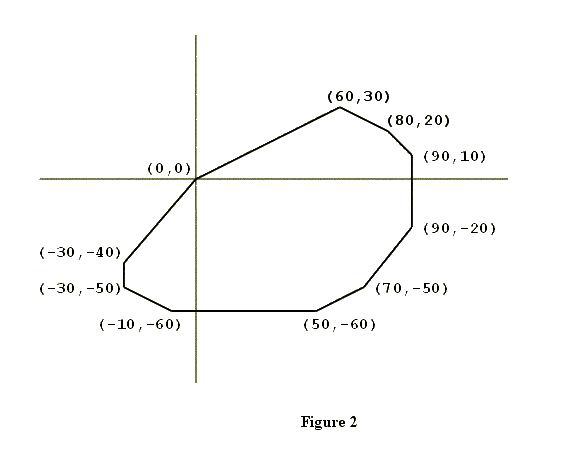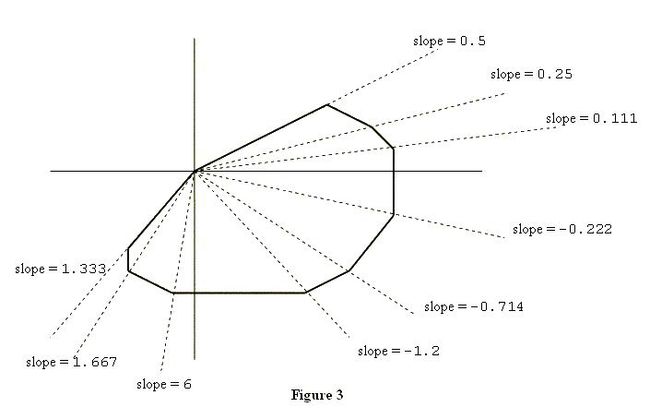- 广州各大IT公司情况调查总结
Monika Zhang
就业面试攻略其他
腾讯微信地址:广东省广州市海珠区新港中路397号TIT创意园B1-B3号使用C语言,C#居多门槛比较高字节跳动广州市天河区珠江东路6号广州周大福金融中心15层01-06室应聘比较注重算法阿里广州市海珠区阅江西路唯品会总部大厦西侧约170米不需要机试,面试难度比较高,注重技术深度,要有一技之长华为广州市黄埔区黄埔东路与红荔西路交叉路口往南约80米需要机试,三道算法题,400分,150分及格,多刷题不
- ElasticSearch~查询操作~(简单查询、批量查询、匹配查询、模糊查询、精确查询、范围查询、通配符查询、must查询、should查询、过滤查询)
飞Link
Elasticelasticsearchlucene全文检索
一、简单查询一、查询所有结果GET/student_info/_search{"query":{"match_all":{}}}二、根据条件查询GET/student_info/_search{"query":{"match":{"name":"张三"}}}三、排序GET/student_info/_search{"query":{"match":{"name":"张三"}},"sort":[{"
- 算法之魂:深入剖析数据结构中的七大排序算法
GeminiGlory
数据结构数据结构排序算法算法
目录1.冒泡排序(BubbleSort)2.选择排序(SelectionSort)3.插入排序(InsertionSort)4.希尔排序(ShellSort)5.快速排序(QuickSort)6.归并排序(MergeSort)7.堆排序(HeapSort)在计算机科学领域,排序是一项基础但至关重要的操作。无论你是处理数据库查询结果还是优化搜索效率,了解不同的排序算法及其适用场景都至关重要。本文将介
- Python技术全景解析:从基础到前沿的深度探索
靠近彗星
python开发语言性能优化个人开发极限编程
目录一、Python为何成为开发者首选?1.核心优势矩阵2.性能进化史二、Python核心应用领域1.数据科学黄金三角2.AI开发新范式三、现代Python进阶技巧1.类型提示革命2.异步编程实战四、Python工程化实践1.现代项目架构2.性能优化矩阵五、Python未来生态展望1.前沿技术融合2.性能革命六、学习路线图1.技能成长路径基础阶段(1-3月)专业方向(3-6月)深度进阶(6-12月
- 直方图梯度提升:大数据时代的极速决策引擎
万事可爱^
大数据机器学习深度学习直方图梯度提升GBDT算法
一、为什么需要直方图梯度提升?在Kaggle竞赛的冠军解决方案中,超过70%的获奖方案都使用了梯度提升算法。但当数据量突破百万级时,传统梯度提升树(GBDT)面临三大致命瓶颈:训练耗时剧增:每个特征的分割点计算都需要全量数据排序内存消耗爆炸:存储排序后的特征值需要额外空间处理效率低下:无法有效利用现代CPU的多核特性而梯度提升决策树(GBDT)作为集成学习的代表算法,通过迭代构建决策树实现预测能力
- 关于AI OS那点事
大囚长
科普天地大模型人工智能
AIOS(人工智能操作系统)作为面向智能时代的操作系统,其功能定位和架构设计与传统操作系统(如Linux、Windows、iOS等)存在显著差异。一、AIOS需具备的核心功能智能体全生命周期管理智能体调度与并发:需支持多智能体任务的优先级排序、资源分配及并发执行,例如通过轮询调度或动态优先级算法优化LLM资源利用率。上下文感知与切换:通过上下文管理器实现智能体交互状态的快照保存与恢复,解决LLM生
- java常用排序方法集合sort
吗喽对你问好
java开发语言数据结构
1.Arrays.sortArrays.sort是用于对数组进行排序的静态方法,位于java.util.Arrays类中。特点:只能用于数组(包括基本类型数组和对象数组)。对基本类型数组(如int[],double[]等)使用快速排序(Dual-PivotQuicksort)。对对象数组(如Integer[],String[]等)使用归并排序(TimSort)。排序是原地进行的(即直接修改原数组)
- C语言复习笔记5---数组
.又是新的一天.
C语言复习笔记c语言算法c++
数组考点排序冒泡排序O(n^2)选择排序O(n^2)(插入排序)分离每一位正序逆序哈希(hash)→用值直接作为下标日期处理问题数组的基本操作插入和删除逆序(移位)7-19田忌赛马(双指针)二维数组→矩阵矩阵转置判断对称矩阵矩阵运算矩阵移位杨辉三角*知识点数组:存储若干个相同的数据类型的元素intchardoublefloatlonglong定义数组数据类型数组名[数组大小]inta[100];数
- 不搞花里胡哨!CMU最新开源:极简风格的LiDAR全景分割+跟踪!
3D视觉工坊
3D视觉从入门到精通3D视觉
来源:3D视觉工坊在公众号「3D视觉工坊」后台,回复「原论文」可获取论文pdf、代码链接添加微信:dddvisiona,备注:三维点云,拉你入群。文末附行业细分群1.笔者个人体会激光雷达全景分割(LPS)一般遵循自下而上的以分割为中心的范式,利用聚类获得对象实例来建立语义分割网络。但是最近CMU&Meta等大佬们重新思考了这种方法,并提出了一个简单而有效的检测中心网络,用于LPS和跟踪。这项工作也
- 蓝桥杯动态规划实战:从数字三角形到砝码称重
藍海琴泉
蓝桥杯动态规划职场和发展
适合人群:蓝桥杯备考生|算法竞赛入门者|DP学习实践者目录一、我的动态规划入门之路1.数字三角形:经典DP首战告捷2.砝码称重:背包问题的变形二、蓝桥杯高频算法考点三、蓝桥杯DP专项训练题四、备考建议一、我的动态规划入门之路1.数字三角形:经典DP首战告捷题目描述:从三角形的顶部到底部有很多条不同的路径。对于每条路径,把路径上面的数加起来可以得到一个和,你的任务就是找到最大的和(路径上的每一步只可
- spring5-介绍Spring框架
m0_74824845
面试学习路线阿里巴巴springjava后端
Spring框架是一个Java平台,它为开发Java应用程序提供全面的基础架构支持。Spring负责基础架构,因此您可以专注于应用程序的开发。Spring可以让您从“plainoldJavaobjects”(POJO)中构建应用程序和通过非侵入性的POJO实现企业应用服务。此功能适用于JavaSE的编程模型,全部的或部分的适应JavaEE模型。2.1依赖注入和控制反转Java应用程序-这是一个宽松
- list和vector的区别
Ashen—one
listwindows数据结构
1>list可以按值删除vector和deque没有给定的函数,需要find();和erase();一起使用才能做到2>list删除元素会释放空间,vector不会3>list是双向迭代器,vector是随机迭代器4>list内部排序是指针指向的更改,vector涉及对象的创建和销毁5>vector改变元素,导致迭代器失效deque删除的时候不会导致迭代器失效(非迭代器位置),插入会导致迭代器失效
- 基于ASP.NET Core的JsonApiDotNetCore框架详解与实践
MCPlayer542
本文还有配套的精品资源,点击获取简介:JsonApiDotNetCore是一个用于.NETCoreASP.NETCore应用程序的JSONAPI框架,它简化了JSONAPI的构建过程,特别是排序、过滤和分页等常见功能。这个框架支持JSONAPI规范,旨在减少开发者编写重复样板代码的工作量,利用.NETCore的依赖注入特性提供高度的可扩展性。开发者可以通过自定义服务和组件来扩展业务逻辑,并实现版本
- 基于cesium的二三维地图
程序员小美
博客毕业设计源码分享java开源vue
一、项目简介基于cesium的二三维地图二、实现功能支持虚线和阴影支持以标注的方式显示属性支持要素查询支持二三维度地球显示支持小数据量文件矢量动态切片三、技术选型Cesiumproj4jsturftext-encodinggeojson-topojsonshpjs四、界面展示五、源码地址回复:地图
- 凌晨三点的代码和引擎轰鸣声
前端后端程序员
凌晨三点,我盯着屏幕上第37次报错的算法,随手抓起桌角已经冷透的咖啡猛灌一口。显示器蓝光里,同事阿杰突然弹出一条消息:"哥们儿,苏州有个车展能撸代码,去不去?"我对着这句话愣了三秒。车展?在我的认知里,那应该是西装革履的销售围着超模拍宣传片的场合,和我们这种格子衫生物有什么关系?直到阿杰甩来一张海报——黑底荧光绿字刺破视网膜:"CISHOWGTSHOW,程序员特别通道,票免费送。"01被编译器耽误
- 剑指 Offer II 113. 课程顺序(中等 图 bfs 拓扑排序 数组 哈希表)
风雨中de宁静
图搜索算法
剑指OfferII113.课程顺序现在总共有numCourses门课需要选,记为0到numCourses-1。给定一个数组prerequisites,它的每一个元素prerequisites[i]表示两门课程之间的先修顺序。例如prerequisites[i]=[ai,bi]表示想要学习课程ai,需要先完成课程bi。请根据给出的总课程数numCourses和表示先修顺序的prerequisites
- CSP-J备考冲刺必刷题(C++) | AcWing 11 背包问题求方案数
热爱编程的通信人
c++算法开发语言
本文分享的必刷题目是从蓝桥云课、洛谷、AcWing等知名刷题平台精心挑选而来,并结合各平台提供的算法标签和难度等级进行了系统分类。题目涵盖了从基础到进阶的多种算法和数据结构,旨在为不同阶段的编程学习者提供一条清晰、平稳的学习提升路径。欢迎大家订阅我的专栏:算法题解:C++与Python实现!附上汇总贴:算法竞赛备考冲刺必刷题(C++)|汇总【题目来源】AcWing:11.背包问题求方案数-AcWi
- 17-OpenCVSharp 中实现 Halcon 的 Points_Harris算子(Harris 角点检测)
观视界
#opencv人工智能计算机视觉图像处理矩阵
专栏地址:《OpenCV功能使用详解200篇》《OpenCV算子使用详解300篇》《Halcon算子使用详解300篇》内容持续更新,欢迎点击订阅在OpenCVSharp中实现类似于Halcon中的Points_Harris算子,实际上就是实现Harris角点检测算法。Harris角点检测算法是用于检测图像中的角点特征,可以用来进行图像匹配、物体识别等任务。Halcon提供的Points_Harri
- C++ STL常用库的使用方法(一)
小崔的技术博客
算法c++算法开发语言
文章目录(0)C++STL介绍(0)C++STL组件(一)Vector容器1)创建vector2)尾部元素扩张3)访问Vector元素4)元素的删除5)元素的排序6)向量的大小(二)String基本字符系列容器1)创建String对象2)给String赋值(三)set集合容器1)创建set集合对象2)元素的插入与中序遍历3)元素的反向遍历4)元素的删除5)元素的检索(四)map映射容器1)map创
- 推荐开源项目:RxFeedback —— 极简的RxSwift架构设计
柏赢安Simona
推荐开源项目:RxFeedback——极简的RxSwift架构设计RxFeedback.swiftTheuniversalsystemoperatorandarchitectureforRxSwift项目地址:https://gitcode.com/gh_mirrors/rx/RxFeedback.swift项目介绍RxFeedback是一个专为RxSwift设计的简洁架构方案,它以反馈循环为基础
- 写leetcode常用的库函数和常量
xsh219
golang小知识点算法数据结构golang
在Go中刷LeetCode,以下是一些常用的标准库函数和数据类型的最大值、最小值:✅常用标准库函数数学与排序math包math.Max(x,y):返回两个float64类型数中的较大值。math.Min(x,y):返回两个float64类型数中的较小值。math.Abs(x):取绝对值。math.Pow(x,y):计算x^y。math.Sqrt(x):计算平方根。sort包sort.Ints(sl
- python输出星号等腰三角形_python打印直角三角形与等腰三角形实例代码
weixin_39644139
python输出星号等腰三角形
python打印直角三角形与等腰三角形实例代码前言本文通过示例给大家详细介绍了关于python打印三角形的相关,分享出来供大家参考学习,下面话不多说了,来一起看看详细的介绍吧1、直角三角形#i控制行数j控制*的个数foriinrange(5):i+=1forjinrange(i):print('*',end='')#end=‘'输出空格print()/2、等腰三角形row=int(input('p
- python绘制等边三角形的代码_Python打印等边三角形
weixin_39621178
示例1:#!/usr/bin/python#-*-coding:UTF-8-*-#根据输入打印rows=int(raw_input('pleaseinputnumber:'))#等边三角形foriinrange(0,rows+1):forjinrange(0,rows-i):print"",j+=1forkinrange(0,2*i-1):ifk==0ork==2*i-2ori==rows:ifi
- Python写倒三角
森之林
python
4.(程序题)编程显示如下所示的三角形图案。要求程序运行时,输入一个正整数,显示该整数行高度的三角形图案。#############h=int(input("请输入高度:"))foriinrange(h):forjinrange(i,h):print("#",end="")forrinrange(0,i):print("",end="")print("")
- 常用的数据结构有哪些?在Go语言中如何定义其实例?
开心码农1号
算法与数据结构数据结构算法go链表
常见的数据结构有:数组、链表、栈、队列、图、哈希表;1、数组用于存储和处理一组固定大小、相同类型的数据,如存储学生成绩、数组排序等。Go语言中的数组长度是固定的,在声明时需要指定长度。特点:数据元素类型相同:数组中的所有元素都具有相同的数据类型;内存地址连续:数组在内存中是连续存储的;随机访问高效:由于数组的内存地址连续,并且元素类型相同,因此可以通过索引快速访问数组中的任意元素。无论要访问数组中
- 收集整理了一些wordpress开发中常用到的实用代码
wodrpress资源分享
wordpresswordpress
wordpress调用全站热门文章代码”,‘post_status’=>‘publish’,//只选公开的文章.‘post__not_in’=>array($post->ID),//排除当前文章‘caller_get_posts’=>1,//排除置顶文章.‘orderby’=>‘comment_count’,//依评论数排序.‘posts_per_page’=>$post_num);$query_
- 基于MATLAB路径规划仿真 轨迹规划,船舶轨迹跟踪控制,数学模
985计算机硕士
仿真模型matlab开发语言
MATLAB路径规划仿真轨迹规划,船舶轨迹跟踪控制,数学模MATLAB路径规划仿真轨迹规划,船舶轨迹跟踪控制,数学模型基于两轮差速的小车模型,用PID环节对航向角进行控制,迫使小车走向目标,或用PID环节对航向角和距离进行控制,迫使小车走向目标LQR算法可自行小车起点坐标文章目录初始化环境定义PID控制函数运行仿真代码说明:代码示例代码说明:为了实现基于两轮差速模型的小车在MATLAB中的路径规划
- 前端解决跨域的几种方案
爱分享的程序员
前端前端
以下是前端解决跨域问题的7种主流方案,根据应用场景和实现难度排序,附详细实现示例:一、开发环境解决方案1.WebpackDevServer代理(推荐)//vue.config.js/webpack.config.jsmodule.exports={devServer:{proxy:{'/api':{target:'http://backend-domain.com',//后端地址changeOri
- BallTree结构和答疑
蒸土豆的技术细节
好多关于balltree的博客,但都说的不清不楚,看得头大.先贴一张github上搜来的balltree的节点结构:lowest_leaf,highest_leaf不知道是什么.left_child,right_child好解释,左右节点.permutation,好像是存储什么东西的排序,不懂.ranges,存储半径.centers,存储圆心/球心.weights,权重?不懂.dims,维度,估计
- 无人机喊话系统:空中扩音器的科技密码!
云卓SKYDROID
无人机科技人工智能云卓科技科普高科技
一、技术核心:空中声波系统的三重架构1.声源处理中枢支持双模输入:麦克风实时采集与数字音频导入搭载DSP数字信号处理器,实现动态降噪(信噪比>70dB)自适应EQ调节,针对不同场景优化频响曲线(如灾害现场增强低频穿透力)2.定向声场发生器采用相控阵扬声器技术,波束角可调范围15°-60°声压级最高达125dB(相当于喷气式飞机起飞噪音)有效投射距离300米(静风环境下)3.飞控集成平台专用减震支架
- sql统计相同项个数并按名次显示
朱辉辉33
javaoracle
现在有如下这样一个表:
A表
ID Name time
------------------------------
0001 aaa 2006-11-18
0002 ccc 2006-11-18
0003 eee 2006-11-18
0004 aaa 2006-11-18
0005 eee 2006-11-18
0004 aaa 2006-11-18
0002 ccc 20
- Android+Jquery Mobile学习系列-目录
白糖_
JQuery Mobile
最近在研究学习基于Android的移动应用开发,准备给家里人做一个应用程序用用。向公司手机移动团队咨询了下,觉得使用Android的WebView上手最快,因为WebView等于是一个内置浏览器,可以基于html页面开发,不用去学习Android自带的七七八八的控件。然后加上Jquery mobile的样式渲染和事件等,就能非常方便的做动态应用了。
从现在起,往后一段时间,我打算
- 如何给线程池命名
daysinsun
线程池
在系统运行后,在线程快照里总是看到线程池的名字为pool-xx,这样导致很不好定位,怎么给线程池一个有意义的名字呢。参照ThreadPoolExecutor类的ThreadFactory,自己实现ThreadFactory接口,重写newThread方法即可。参考代码如下:
public class Named
- IE 中"HTML Parsing Error:Unable to modify the parent container element before the
周凡杨
html解析errorreadyState
错误: IE 中"HTML Parsing Error:Unable to modify the parent container element before the child element is closed"
现象: 同事之间几个IE 测试情况下,有的报这个错,有的不报。经查询资料后,可归纳以下原因。
- java上传
g21121
java
我们在做web项目中通常会遇到上传文件的情况,用struts等框架的会直接用的自带的标签和组件,今天说的是利用servlet来完成上传。
我们这里利用到commons-fileupload组件,相关jar包可以取apache官网下载:http://commons.apache.org/
下面是servlet的代码:
//定义一个磁盘文件工厂
DiskFileItemFactory fact
- SpringMVC配置学习
510888780
springmvc
spring MVC配置详解
现在主流的Web MVC框架除了Struts这个主力 外,其次就是Spring MVC了,因此这也是作为一名程序员需要掌握的主流框架,框架选择多了,应对多变的需求和业务时,可实行的方案自然就多了。不过要想灵活运用Spring MVC来应对大多数的Web开发,就必须要掌握它的配置及原理。
一、Spring MVC环境搭建:(Spring 2.5.6 + Hi
- spring mvc-jfreeChart 柱图(1)
布衣凌宇
jfreechart
第一步:下载jfreeChart包,注意是jfreeChart文件lib目录下的,jcommon-1.0.23.jar和jfreechart-1.0.19.jar两个包即可;
第二步:配置web.xml;
web.xml代码如下
<servlet>
<servlet-name>jfreechart</servlet-nam
- 我的spring学习笔记13-容器扩展点之PropertyPlaceholderConfigurer
aijuans
Spring3
PropertyPlaceholderConfigurer是个bean工厂后置处理器的实现,也就是BeanFactoryPostProcessor接口的一个实现。关于BeanFactoryPostProcessor和BeanPostProcessor类似。我会在其他地方介绍。PropertyPlaceholderConfigurer可以将上下文(配置文件)中的属性值放在另一个单独的标准java P
- java 线程池使用 Runnable&Callable&Future
antlove
javathreadRunnablecallablefuture
1. 创建线程池
ExecutorService executorService = Executors.newCachedThreadPool();
2. 执行一次线程,调用Runnable接口实现
Future<?> future = executorService.submit(new DefaultRunnable());
System.out.prin
- XML语法元素结构的总结
百合不是茶
xml树结构
1.XML介绍1969年 gml (主要目的是要在不同的机器进行通信的数据规范)1985年 sgml standard generralized markup language1993年 html(www网)1998年 xml extensible markup language
- 改变eclipse编码格式
bijian1013
eclipse编码格式
1.改变整个工作空间的编码格式
改变整个工作空间的编码格式,这样以后新建的文件也是新设置的编码格式。
Eclipse->window->preferences->General->workspace-
- javascript中return的设计缺陷
bijian1013
JavaScriptAngularJS
代码1:
<script>
var gisService = (function(window)
{
return
{
name:function ()
{
alert(1);
}
};
})(this);
gisService.name();
&l
- 【持久化框架MyBatis3八】Spring集成MyBatis3
bit1129
Mybatis3
pom.xml配置
Maven的pom中主要包括:
MyBatis
MyBatis-Spring
Spring
MySQL-Connector-Java
Druid
applicationContext.xml配置
<?xml version="1.0" encoding="UTF-8"?>
&
- java web项目启动时自动加载自定义properties文件
bitray
javaWeb监听器相对路径
创建一个类
public class ContextInitListener implements ServletContextListener
使得该类成为一个监听器。用于监听整个容器生命周期的,主要是初始化和销毁的。
类创建后要在web.xml配置文件中增加一个简单的监听器配置,即刚才我们定义的类。
<listener>
<des
- 用nginx区分文件大小做出不同响应
ronin47
昨晚和前21v的同事聊天,说到我离职后一些技术上的更新。其中有个给某大客户(游戏下载类)的特殊需求设计,因为文件大小差距很大——估计是大版本和补丁的区别——又走的是同一个域名,而squid在响应比较大的文件时,尤其是初次下载的时候,性能比较差,所以拆成两组服务器,squid服务于较小的文件,通过pull方式从peer层获取,nginx服务于较大的文件,通过push方式由peer层分发同步。外部发布
- java-67-扑克牌的顺子.从扑克牌中随机抽5张牌,判断是不是一个顺子,即这5张牌是不是连续的.2-10为数字本身,A为1,J为11,Q为12,K为13,而大
bylijinnan
java
package com.ljn.base;
import java.util.Arrays;
import java.util.Random;
public class ContinuousPoker {
/**
* Q67 扑克牌的顺子 从扑克牌中随机抽5张牌,判断是不是一个顺子,即这5张牌是不是连续的。
* 2-10为数字本身,A为1,J为1
- 翟鸿燊老师语录
ccii
翟鸿燊
一、国学应用智慧TAT之亮剑精神A
1. 角色就是人格
就像你一回家的时候,你一进屋里面,你已经是儿子,是姑娘啦,给老爸老妈倒怀水吧,你还觉得你是老总呢?还拿派呢?就像今天一样,你们往这儿一坐,你们之间是什么,同学,是朋友。
还有下属最忌讳的就是领导向他询问情况的时候,什么我不知道,我不清楚,该你知道的你凭什么不知道
- [光速与宇宙]进行光速飞行的一些问题
comsci
问题
在人类整体进入宇宙时代,即将开展深空宇宙探索之前,我有几个猜想想告诉大家
仅仅是猜想。。。未经官方证实
1:要在宇宙中进行光速飞行,必须首先获得宇宙中的航行通行证,而这个航行通行证并不是我们平常认为的那种带钢印的证书,是什么呢? 下面我来告诉
- oracle undo解析
cwqcwqmax9
oracle
oracle undo解析2012-09-24 09:02:01 我来说两句 作者:虫师收藏 我要投稿
Undo是干嘛用的? &nb
- java中各种集合的详细介绍
dashuaifu
java集合
一,java中各种集合的关系图 Collection 接口的接口 对象的集合 ├ List 子接口 &n
- 卸载windows服务的方法
dcj3sjt126com
windowsservice
卸载Windows服务的方法
在Windows中,有一类程序称为服务,在操作系统内核加载完成后就开始加载。这里程序往往运行在操作系统的底层,因此资源占用比较大、执行效率比较高,比较有代表性的就是杀毒软件。但是一旦因为特殊原因不能正确卸载这些程序了,其加载在Windows内的服务就不容易删除了。即便是删除注册表中的相 应项目,虽然不启动了,但是系统中仍然存在此项服务,只是没有加载而已。如果安装其他
- Warning: The Copy Bundle Resources build phase contains this target's Info.plist
dcj3sjt126com
iosxcode
http://developer.apple.com/iphone/library/qa/qa2009/qa1649.html
Excerpt:
You are getting this warning because you probably added your Info.plist file to your Copy Bundle
- 2014之C++学习笔记(一)
Etwo
C++EtwoEtwoiterator迭代器
已经有很长一段时间没有写博客了,可能大家已经淡忘了Etwo这个人的存在,这一年多以来,本人从事了AS的相关开发工作,但最近一段时间,AS在天朝的没落,相信有很多码农也都清楚,现在的页游基本上达到饱和,手机上的游戏基本被unity3D与cocos占据,AS基本没有容身之处。so。。。最近我并不打算直接转型
- js跨越获取数据问题记录
haifengwuch
jsonpjsonAjax
js的跨越问题,普通的ajax无法获取服务器返回的值。
第一种解决方案,通过getson,后台配合方式,实现。
Java后台代码:
protected void doPost(HttpServletRequest req, HttpServletResponse resp)
throws ServletException, IOException {
String ca
- 蓝色jQuery导航条
ini
JavaScripthtmljqueryWebhtml5
效果体验:http://keleyi.com/keleyi/phtml/jqtexiao/39.htmHTML文件代码:
<!DOCTYPE html>
<html xmlns="http://www.w3.org/1999/xhtml">
<head>
<title>jQuery鼠标悬停上下滑动导航条 - 柯乐义<
- linux部署jdk,tomcat,mysql
kerryg
jdktomcatlinuxmysql
1、安装java环境jdk:
一般系统都会默认自带的JDK,但是不太好用,都会卸载了,然后重新安装。
1.1)、卸载:
(rpm -qa :查询已经安装哪些软件包;
rmp -q 软件包:查询指定包是否已
- DOMContentLoaded VS onload VS onreadystatechange
mutongwu
jqueryjs
1. DOMContentLoaded 在页面html、script、style加载完毕即可触发,无需等待所有资源(image/iframe)加载完毕。(IE9+)
2. onload是最早支持的事件,要求所有资源加载完毕触发。
3. onreadystatechange 开始在IE引入,后来其它浏览器也有一定的实现。涉及以下 document , applet, embed, fra
- sql批量插入数据
qifeifei
批量插入
hi,
自己在做工程的时候,遇到批量插入数据的数据修复场景。我的思路是在插入前准备一个临时表,临时表的整理就看当时的选择条件了,临时表就是要插入的数据集,最后再批量插入到数据库中。
WITH tempT AS (
SELECT
item_id AS combo_id,
item_id,
now() AS create_date
FROM
a
- log4j打印日志文件 如何实现相对路径到 项目工程下
thinkfreer
Weblog4j应用服务器日志
最近为了实现统计一个网站的访问量,记录用户的登录信息,以方便站长实时了解自己网站的访问情况,选择了Apache 的log4j,但是在选择相对路径那块 卡主了,X度了好多方法(其实大多都是一样的内用,还一个字都不差的),都没有能解决问题,无奈搞了2天终于解决了,与大家分享一下
需求:
用户登录该网站时,把用户的登录名,ip,时间。统计到一个txt文档里,以方便其他系统调用此txt。项目名
- linux下mysql-5.6.23.tar.gz安装与配置
笑我痴狂
mysqllinuxunix
1.卸载系统默认的mysql
[root@localhost ~]# rpm -qa | grep mysql
mysql-libs-5.1.66-2.el6_3.x86_64
mysql-devel-5.1.66-2.el6_3.x86_64
mysql-5.1.66-2.el6_3.x86_64
[root@localhost ~]# rpm -e mysql-libs-5.1


